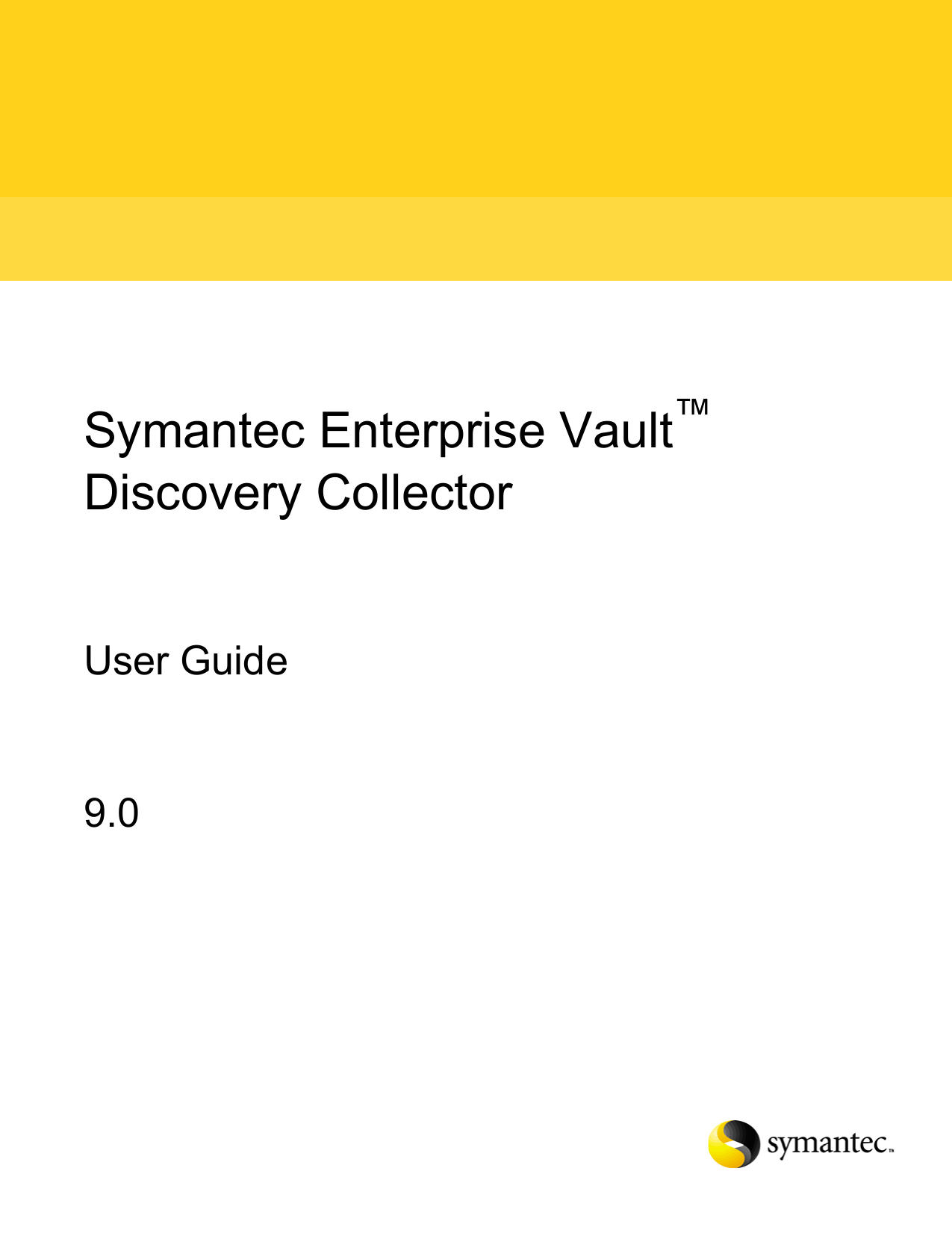

However, you can also make some saving when keeping archived data on more expensive storage, such as a Storage Area Network (SAN), due to the additional compression and single-instance storage that Enterprise Vault provides. In terms of storage cost savings, there is most benefit in keeping archived data on cheaper network-attached storage (NAS). We do not intend to list these systems here, although EMC Centera is discussed in a separate section. Symantec works with many storage vendors to certify their systems and ensure that the performance of these systems is acceptable. The primary requisite is that the archived data is secure and retrievable.
#Symantec enterprise vault 11 administration guide archive
One of the purposes of Enterprise Vault is to allow cheaper storage to be used to archive data. Turning hyperthreading on or off makes no noticeable difference to the overall performance, so we recommend that the manufacturer’s default setting is not changed. There is no benefit to having more than 4 GB of memory on the Enterprise Vault server, and you should not set the /3GB /PAE boot flags. However, it is best to configure Enterprise Vault with 4 GB of memory to deal with situations when more memory is beneficial, such as conversions of large files or concurrent indexing.

In general, between 1 GB and 2 GB memory is sufficient for most day-to-day archiving operations. For this reason, you should only consider anything more powerful than a four-processor server if your needs demand it. However, the other components of the system-the disks, memory, network, and archiving source-need to match this power. In general, the more powerful the processor, the higher the ingest and retrieval rates. In testing, servers with two dual core processors were found to be as powerful as four-processor servers. There are many processor and server types, and although their speed in GHz may not be an indication of their actual power, this document assumes that your processors are 2.8 GHz or above. The most critical factor in the performance of Enterprise Vault is the specification of the system that is used-the servers, the disk systems, the memory, and the network. These are included to give an idea of where resources are used by the agents so that some performance counters such as disk IOPS and network traffic can be seen on a working system. Each section has an example from testing. This guide has a separate section for each of the archiving agents. Upgrades from the previous version are quick unless there are many items in the StorageDelete table in the Vault Store database, and therefore this table should be empty or near empty when upgrading. All this leads to the need to be very cautious when sizing a system.įor all the major components of Enterprise Vault 7.0, there is no difference in performance from previous versions of Enterprise Vault. In addition, most systems expect growth in both volume and size of data, and indeed the very existence of an archiving service may lead users to allow their mail or files to be archived rather than delete them. These include the type and size of data that is archived, the file types, the distribution lists, and so on. Many factors influence the performance and needs of an archiving system. This document provides guidelines on expected performance when running Symantec Enterprise Vault.Įvery customer has different needs and different environments.


 0 kommentar(er)
0 kommentar(er)
